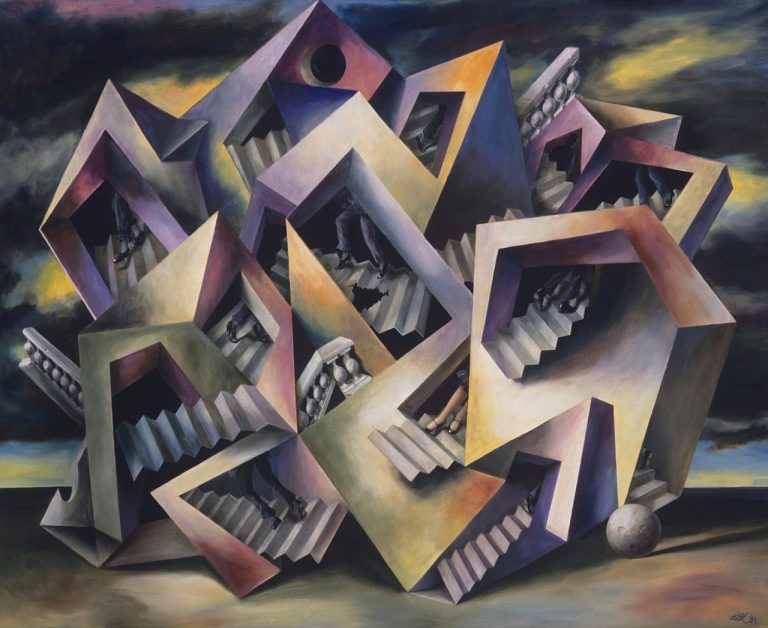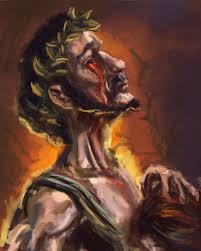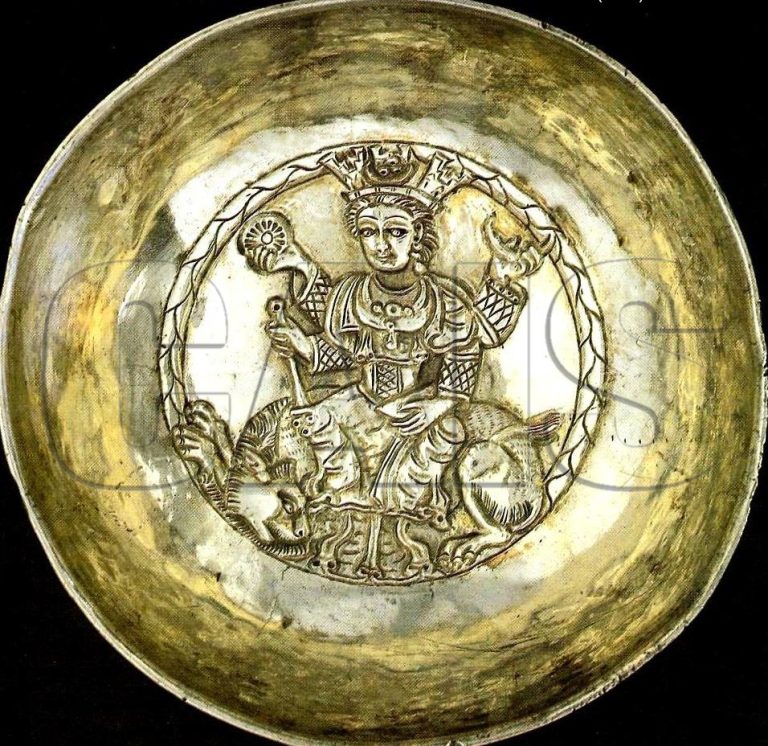Stasis in darkness.
Then the substanceless blue
Pour of tor and distances.
To begin, and continue more, how about a quotation from D.H.Lawrence’s The Rainbow in regard to its character Ursula is pointed out: “The darkness and wetness of rain could not put out the hard, urgent, massive fire that was locked within these flanks.”
Ariel is a spirit. As an extract taken from Shakespeare’s Tempest: it is a “magical, musical” sort of being that withholds hunger for a liberational motive.
As marked above are the first three lines of the subject poem. The Ariel spirit presented inside this text is mostly agreed upon to be pinpointing a (female) rider on the horseback seeking freedom. The “substanceless blue” that pours is a primitive representation of the vaulted dome/ the sky that encompasses the earth— the land. It is strewn with peaky stars as well as the rest of the celestial bodies. In the meanwhile, the rider on the horseback (Ariel) is gradually gaining speed— from trotting to galloping. The wild farthest distances, the manners and matters around, occupying the heavens also gradually are getting integrated, leaving a kaleidescopic impression, insight and wisdom, too, upon the free-spirited being traversing expansive domains.
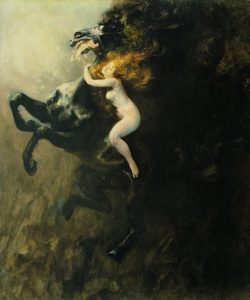
God’s lioness,
How one we grow,
Pivot of heels and kness! The furrow
The highlight of “God’s lioness,” represents to what strains Plath, hungry and keen, traverses to adorn her letter and juxtapose it with the theme surrounding the corruption, bankruptcy, idolatry, and the unattended, systematic justice that had led Jerusalem and its Judah kings to a destructive degree of exile and removal. The highlight, despite being an indicator of royal authority- which is practically a broken column in the case here, has a tragic soury saltness to it. Thus, the addressee must’ve been downled to a tragic final.
How one we grow,
Pivot of heels and knees! The furrow
Splits and passes, sister to
The brown arc
Of the neck I cannot catch,
For the third time being repeated, “How one we grow,” is an embodiment of the unity of the structure experienced and gone through by all the earthling individuals. Also, the subject structure here does not only function as an illustrator of the normal slopy/ bending living structure a human takes, but as the observation can report contains a set of metaphorical changes in equation (with the former) on purpose. That is to play justice to Plath’s design.
If the “furrow” be taken as symbol of the winding trajectory led by one, the end of which is located by death, to an end which all come to… the poetic body of this stanza pinpoints a struggle which is also experienced by individuals collectively— it’s the kind of stability everyone tries to keep decluttered. However, the massive material has in itself as an inevitable end to mess out as does happen with a dilapidated building throughout.
Hence, at one point, the selfsame life that hosts all individuals plays the role of a sister to the hereafter served by death. Then, this worldly life is personified with femininity.

Nigger-eye
Berries cast dark
Hooks
Black sweet blood mouthfuls,
Shadows.
But this life, as should be pointed out, cannot be denied but that is not bereft of the unconscious eye. Yet, mustn’t be taken for nothing that the unconscious eye (Nigger-eye) is not a racist signifier but a blind point which can deliver one, as is passing through the “brown arc” on the Judgment day, to more harm than good can be afforded. Taken from the same extract at above is this hazard justified as the unconscious is a realm buried beneath a lot of shadows whose mouths flood with black sweet blood, not because they’re vampire shadows, but because since the unconscious is the pleasure principle, consuming, and if takes over the human subject can veer one off the human trajectory as to drive him/ her to adopt animalistic principles. Thus, the unconscious drains one’s life force. It is after all the domain of suppressed, repressed, and oppressed vows, desires, and obsessions as well as ambitions.
Something else
Hauls me through air
Thighs, hair;
Flakes from my heels.
At the same time that Plath connotes that the unconscious has got the ability to put forth threat against the one running after freedom. So, as she is passing under through the arch of judgment, there appears to be one more single matter dragging her (the self) like a drifting plastic bag through the air. Next, while from her upper body part, she is being manipulated, from beneath her, her below half is facing mutilation. Here is where the part of the speaker’s traumatic life kicks in: Her brilliance and perfectionism work against her as of now, to sabotage her. She is inclined to be gravitated to the ground (spot), while alas, some other factor barges to haul her to the distance above. That’s where she starts losing conscious connection with reality and start getting submerged in fatality. That all takes place as the result of the running action like an exercise that’s the best resolution for one to bring out their true (diabolical) essence outwards and lose control for the sake of freedom.
White
Godiva, I unpeel
Dead hands, dead stringencies.
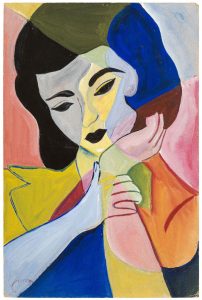
The riding personage then enacts and parades in a ‘rebellious’ attack. She becomes aware of all the old and aged negativities and side effects, especially those in psychotic settings, holding her back from true liberation. She peels off all those that gravitate her as to keep her away from freedom. Dead stringencies could be allusive, particularly, to the time the speaker (Plath) resided under her father’s autocracy and scrutiny. She is tenacious enough to make claim over her own life and explore her true fiery desire to rewrite what she wills for her own good: Seeking personally decreed action/ response.
And now I
Foam to wheat, a glitter of seas.
The child’s cry
Melts in the wall.
And I
Am the arrow,
The dew that flies
Suicidal, at one with the drive
Into the red
Eye, the cauldron of morning.
Hereby, the riding personage lashes out as she undergoes beyond a mere transformation from how she is seen and/ or used only as a possession— allusion to an era where women’s rights movement was so not in reception to encapsulate all the matters, nigh to victory… So, a woman was still situated in degrading minorites as symbolizing passivity and submission, whereas here the speaker is being fiery and revolting against such stationary position, liberating her senses to the achievement of higher prerogatives. The speaker refuses to any longer remain like a child, sobbing and crying her eyes out only to have her voice halted by the brick. So, more than having Ariel, a horse, driving her like an arrow to the beyond level- of what may yet be considered surrealistic till it’s achieved and actualized, alone- she advertises herself to be the Ariel. Thus, construing every woman to have such a model set as an example for herself. The speed of this arrow is to the suicidal extent. Alas, however, that the speaker (Plath) succumbs to wilderness and at the early morning hours like in 4 a.m. commits suicide by casting her head into a gas-filled oven. 4 a.m. is considered to be a holy/ superstitious hour to the Plath calendar as it is the indicator of the exact time that she would’ve seated herself to writing the poems which would later be collected as in the Ariel document.
References:
Michaels, Jennifer E. “The Horse as a Life-Symbol in the Prose Works of D. H. Lawrence”. Grinnel College, University of New Brunswick, 1978.
Plath, Sylvia. “Ariel”. Poetry Foundation, Ariel | The Poetry Foundation.
“Shakespeare’s The Tempet- Ariel”. BBC, Bitesize. BBC, Shakespeare’s The Tempest – Ariel – The Tempest – Shakespeare – KS3 English – BBC Bitesize.
Maytham Khaghani


